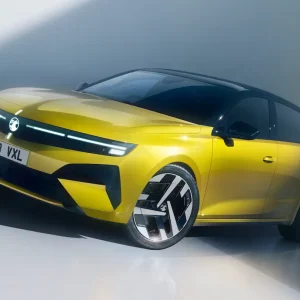A report warning of confusion over the capabilities of cars fitted with advanced driver assistance technology has prompted a call for fleets to make sure their drivers are properly informed.
Motor industry body Thatcham Research and the Association of British Insurers (ABI) have produced a paper, ‘Assisted and Automated Driving Definition and Assessment’, which they say identifies dangerous grey areas.
These include misleading names, how and when drivers should take back control of their vehicles, and systems that are only designed to work in specific situations, such as on motorways, but can also function anywhere.
The organisations say the paper comes in the wake of growing reports of people crashing while over-relying on technology that is not yet designed to drive the car independently.
Thatcham head of research Matthew Avery said, “We are starting to see real-life examples of the hazardous situations that occur when motorists expect the car to drive and function on its own.
“Specifically, where the technology is taking ownership of more and more of the driving task, but the motorist may not be sufficiently aware that they are still required to take back control in problematic circumstances.
“Fully automated vehicles that can own the driving task from A to B, with no need for driver involvement whatsoever, won’t be available for many years to come.
“Until then, drivers remain criminally liable for the safe use of their cars and, as such, the capability of current road vehicle technologies must not be oversold.”
Thatcham has drawn up a list of key criteria that it says every assisted vehicle must have, and says it has developed a new consumer testing programme for the systems, which is set to begin this summer.
It says how systems are named will be a key focus, with any premature inference around automated capabilities being marked down.
Avery added, “It begins with how systems are named and described across carmaker marketing materials and the driver’s handbook.
“Names like Autopilot or ProPilot are deeply unhelpful, as they infer the car can do a lot more than it can.”
John Pryor, chairman of fleet operator organisation ACFO, said the report was right to highlight the possible blurring of ‘assisted’ and ‘automated’ systems in the minds of drivers, and that fleets might consider training as a result.
“Cars have never been safer than they are today, particularly with the plethora of advanced driver assistance systems, and that is a welcome development,” he said.
“But the ever-increasing sophistication of vehicles further underlines the importance of the handover process to company car drivers, who may well need to be educated on the capabilities of each system.”
Pryor said it was possible the names of some systems could be wrongly interpreted, and also that drivers could be confused by many manufacturers using acronyms to describe safety-related systems.
He added, “Fleet decision-makers and drivers must be mindful of the capabilities of the new technologies appearing in vehicles.
“Therefore, it may be applicable for drivers to undergo a ‘demonstration road test’ with the vehicle handover agent so they are fully versed on the workings of ‘assisted’ systems applicable to their chosen car.”
In response to the report, Tesla, which fits the Autopilot system to its cars, and Nissan, the manufacturer behind ProPilot, both insisted their customers were completely clear about the systems’ capabilities. A Tesla spokesperson said, “The feedback that we get from our customers shows that they have a very clear understanding of what Autopilot is, how to properly use it and what features it consists of.
“When using Autopilot, drivers are continuously reminded of their responsibility to keep their hands on the wheel and maintain control of the vehicle at all times.
“This is designed to prevent driver misuse, and is among the strongest driver-misuse safeguards of any kind on the road today.
“Tesla has always been clear that Autopilot doesn’t make the car impervious to all accidents and the issues described by Thatcham won’t be a problem for drivers using Autopilot correctly.”
A Nissan spokesperson said, “ProPilot is a hands-on, eyes-on, driver-assist system that can be used for motorway and dual carriageway driving.
“This is clearly communicated to customers at all stages of the purchase process.
“The system requires the driver to be in control at all times, and with their hands on the steering wheel – the system deactivates if this is not the case.”





